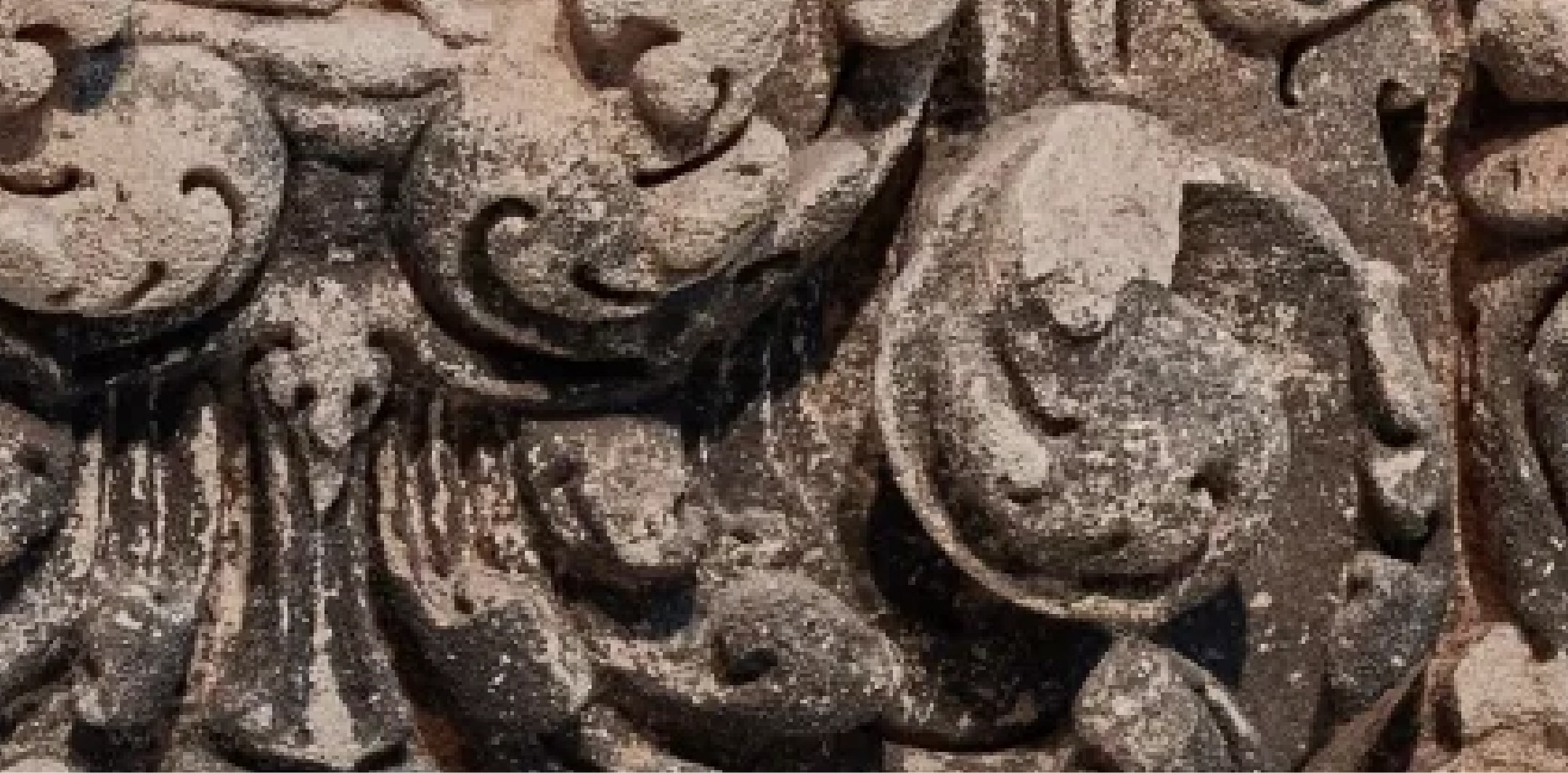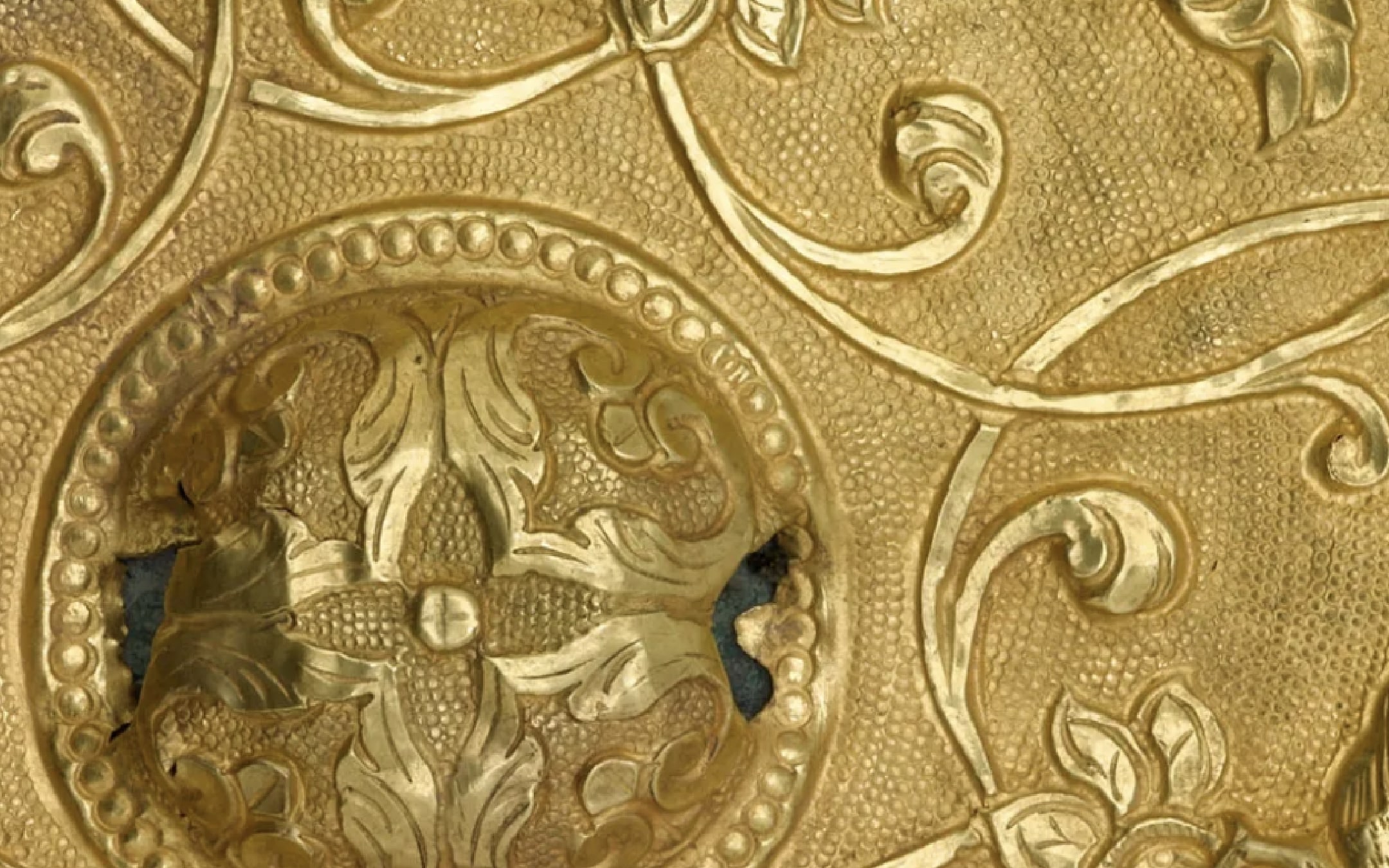Vase

Terms of Use
Creative CommonsAt A Glance
-
Period
1600-1615 -
Geography
Iga kilns, Mie prefecture, Japan -
Material
White stoneware with multiple layers of ash glaze, iron glaze; gold lacquer repairs -
Dimension
H x Diam: 28.8 × 15.4 cm (11 5/16 × 6 1/16 in) -
Accession Number
F1898.451 -
EDAN ID
edanmdm:fsg_F1898.451
Object Details
-
Description
Flower vase (hana-ike) of irregular shape with two bulbs at base and very uneven cylinder above. Flat foot with some glaze. Two square knob handles. Lacquer repairs and much paint on body.Clay: medium coarse, fired iron red where unglazed.Glaze: uneven cream and grayish color, crackled; some brownish, very uneven.Decoration: clay incised in some areas with both thick and thin lines. -
Label
This vase unites extremes of formality and rusticity in a manner typical of Iga tea wares. The form was inspired by antique Chinese celadon-glazed vases, yet the rough surface bears irregular ash-glaze deposits resulting from long exposure to the flames of a wood-fired kiln. The rich coloration of this vase attracted Charles Lang Freer, even though wood-fired stoneware did not become widely popular among Western collectors until recent decades. -
Provenance
To 1898Yamanaka & Company, to 1898 [1]From 1898 to 1919Charles Lang Freer (1854-1919), purchased from Yamanaka & Company in 1898 [2]From 1920Freer Gallery of Art, gift of Charles Lang Freer in 1920 [3]Notes:[1] See Original Pottery List, L. 57, Freer Gallery of Art and Arthur M. Sackler Gallery Archives. The majority of Charles Lang Freer’s purchases from Yamanaka & Company were made at its New York branch. Yamanaka & Company maintained branch offices, at various times, in Boston, Chicago, London, Peking, Shanghai, Osaka, Nara, and Kyoto. During the summer, the company also maintained seasonal locations in Newport, Bar Harbor, and Atlantic City.[2] See note 1.[3] The original deed of Charles Lang Freer's gift was signed in 1906. The collection was received in 1920 upon the completion of the Freer Gallery. -
Collection
Freer Gallery of Art Collection -
Exhibition History
Japanese Art from the Collection (October 26, 2024 - ongoing)The Power to See Beauty (October 14, 2017 to September 6, 2022)Imperfectly Beautiful: Inventing Japanese Ceramic Style (October 14, 2017 - October 14, 2019)Golden Seams: The Japanese Art of Mending Ceramics (November 8, 2008 to May 10, 2009)Freer and Tea: 100 Years of The Book of Tea (November 19, 2005 to May 29, 2006)Isamu Noguchi and Modern Japanese Ceramics (May 3 to September 7, 2003)Japanese Art (May 9, 1993 to November 21, 1995)Japanese Art (November 7, 1986 to July 19, 1988)Japanese Ceramics from Past to Present (February 18, 1983 to February 16, 1984)Japanese Ceramics (April 11, 1978 to January 17, 1980) -
Previous custodian or owner
Yamanaka and Co. 山中商会 (1917-1965) (C.L. Freer source)Charles Lang Freer (1854-1919) -
Origin
Iga kilns, Mie prefecture, Japan -
Credit Line
Gift of Charles Lang Freer -
Type
Vessel -
On View
Freer Gallery 06: Japanese Art from the Collection -
Restrictions and Rights
CC0 - Creative Commons (CC0 1.0)
This image is in the public domain (free of copyright restrictions). You can copy, modify, and distribute this work without contacting the Smithsonian. For more information, visit the Smithsonian's Terms of Use page.
The information presented on this website may be revised and updated at any time as ongoing research progresses or as otherwise warranted. Pending any such revisions and updates, information on this site may be incomplete or inaccurate or may contain typographical errors. Neither the Smithsonian nor its regents, officers, employees, or agents make any representations about the accuracy, reliability, completeness, or timeliness of the information on the site. Use this site and the information provided on it subject to your own judgment. The National Museum of Asian Art welcomes information that would augment or clarify the ownership history of objects in their collections.
Keep Exploring
-
Related Resources
-
Date
-
Name
-
Place
-
Topic
-
Culture
-
Object Type
-
On View

